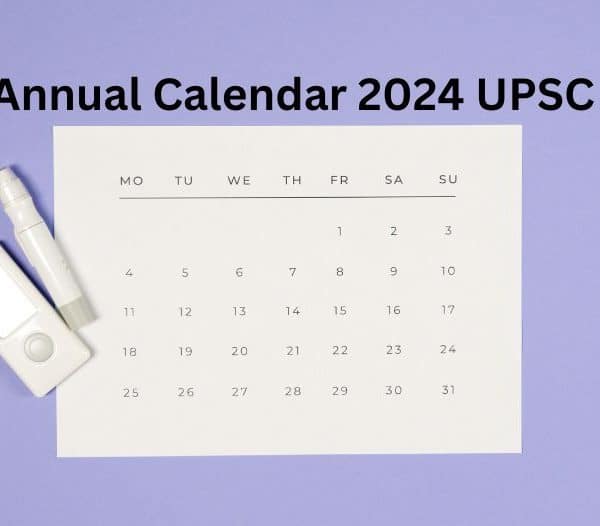If you are an IAS aspirant we can totally understand your struggle to cover a plethora of syllabus in stipulated time. To help you with a bit of it we have collected the information about the Economic survey of 2021 which is important for you to read and have knowledge about. The Indian Economic Survey is an annual paper published by the Indian Ministry of Finance. Every year, just before the Union Budget, the Department of Economic Affairs, Finance Minister confers the Economic Survey of India in Parliament. During the Budget Session, this document is presented to both houses of Parliament.
The Economic Survey examines the Indian economy’s performance over the previous year. It highlights the government’s policy initiatives, summarizes the performance of major development programs, and depicts the economy’s growth prospects. The Chief Economic Advisor makes the presentation (CEA). The current CEA, Krishnamurthy Subramanian, has released the Economic Survey 2021 ahead of the Union Budget 2021.
Importance of Economic Survey 2021 for UPSC
It is an important resource for the UPSC exam, particularly for the subjects Indian economy, politics, and government schemes. According to the new trend, the economy and the environment are inextricably linked. As a result, questions may arise from that perspective as well. Students can use actual phrases from the Economic Survey to formulate answers for the UPSC Mains Exam.
In addition, the government often implements issues assessed in the Economic Survey and suggests reforms in future initiatives. A good example is the Direct Benefit Transfer (DBT), proposed by the government and implemented in previous economic surveys. Knowledge about economic surveys helps the candidate in essay writing if any of such topics come in the paper as the survey analysis describes many problems that are prevailing in the society. Your General Studies Paper III attempt is significantly enhanced by the addition of the important and relevant facts and figures presented in this document.
Also Read:– UPSC 2021 Prelims Exam Date Changed: Here’s the Latest UPSC Notification, Exam Date & More
Economic Survey of India 2021: Highlights
The theme was “Saving Lives and Livelihoods”. The Survey was presented by Finance Minister Smt Nirmala Sitharaman.
#1 With a silver lining in the agricultural sector, the growth of GDP in the financial year 2022 is estimated at 11 percent.
#2 According to the survey, Gurudev Rabindranath Tagore’s sense of ‘a mind without fear’ should be reflected in India’s fiscal policy. It is also stated that Indian ratings for sovereign credit do not represent its fundamental principles, which are evident from its history of zero sovereign default.
#3 The recovery would be driven by the low base and continuing normalization in economic activities as the vaccination trend gathers momentum.
#4 The growth of government consumption and net exports has not been reduced any further.
The economy has demonstrated a V-shaped recovery backed by a COVID-19 vaccination drive. (In the related article, read in detail on post-pandemic economic recovery.)
Some more Highlights!
#5 In order to ensure that growth reaches pre-covid levels, the Survey has pushed for a continued expansionary government fiscal stance.
#6 The report says that the country does not need to worry about debt as long as GDP continues to grow.
#7 In the second half of 2011, exports have been projected to decrease by 5.8% and imports by 11.3%.
#8 This fiscal, which is a historic high after 17 years, is expected to have a current account excess of 2 percent of GDP.
Also Read:- What is Ramsar Sites in India? Here’re Some Must-know Facts about Ramsar Site for UPSC
Must know Highlights for UPSC
#1 Over-regulation in the economy causes regulations to be ineffective, even when processes are followed correctly, the situation can be tackled with the help of simplified regulations and investment under more supervision.
#2 It recommends performing an asset quality review immediately after the forbearance is withdrawn.
#3 The private sector should make more investments in research and development.
#4 Forbearance is an “emergency medicine” that should be stopped as soon as the economy shows signs of improvement, not a “staple diet” that should be followed for years.
#5 It called for the banks’ books to be cleaned in order to ensure that mistakes of the past were avoided.
#7 The legal infrastructure for recapitalizing loans needs to be strengthened.
#8 The Survey supported the new farm laws that the small and marginal farmers would benefit from and that it would open up an era of the free market in farming.
V-shaped Economic Recovery after Lockdown
The V-shaped recovery is a kind of economic recession and recovery in graphics similar to a “V” form. In particular, the V-shaped recovery is a chart that economists create for the study of recessions and recoveries.
#1 A V-shaped recovery is accompanied by a marked and sustainable economic recovery following a sharp decline in performance measures.
#2 A resilient V-shaped regeneration is ongoing from July 2020.
It is supported by a mega-vaccination effort with the hope that the services sector will recover robustly and that there will be robust growth in consumption and investment. V-shaped recovery is caused by a renewal of high-speed indicators, such as demand for power, train freight, E-Way bills, GST collection, steel consumption, and so forth.
As lockdowns gradually scaled away along with Aatmanirbhar Bharat Mission support, the economic fundamentals are still strong, the economy is steeply moving towards recovery. This path would lead to the growth of 2,4% over the total level of 2019-20 in the actual gross domestic product (GDP), which means a two-year period for the economy to go past the pre-pandemic level.
Also Read:- Official Working Hours of an IAS Officer: What is it Like Working at Your Dream Job?
Highlights- Debt Sustainability and Growth
In the Indian context, growth leads to debt sustainability, but not necessarily the opposite.
Debt sustainability depends on the ‘IRGD’ (interest rate differential), i.e. the difference between the rate of interest and the rate of growth. In India, negative IRGD – not because of low interest rates, but because of much higher growth rates- leads to a discussion of fiscal policy, in particular in the context of slowing growth and economic crises. Taxation policies that boost growth will reduce the debt-to-GDP ratio.
In Kerala, Punjab, Haryana, and Gujarat access to bare necessities is the highest while in Odisha, Jharkhand, West Bengal, and Tripura, it is the lowest.
Service Sector Highlights
#1 The services sector accounts for more than 54% of Indian Gross Value Added (GVA) and almost 45% of the total FDI inflow into India.
#2 Services account for 48% of total exports, which in recent years have exceeded the level of goods exports.
#3 The main indicators, like the index of purchase managers, rail freight, and port traffic, show a V-shaped recovery following a sharp decrease during the lockdown.
#4 Start-Up: In the middle of the Covid-19 pandemic the Indian startup ecosystem has progressed well with 38 unicorns – adding a record number of 12 startups to last year’s list of Unicorns.
Also Read:- IAS Tripurari Sharan Wiki: Biography and Biodata of Tripurari Sharan
Human Development, Social Infrastructure, and Employment: Highlights for UPSC
#1The combined (Centre and States) social sector expenditure as a percentage of GDP increased in 2020-21 compared to the previous year.
#2 India was ranked 131st out of 189 countries in the 2019 Human Development Index (HDI).
#3 The government’s incentive to increase employment through the Aatmanirbhar Bharat Rozgar Yojana, as well as the rationalization and simplification of existing labor codes into four codes.
#4 In India, the female labour force participation rate (LFPR) is low:
#5 Females spend a disproportionate amount of time providing unpaid domestic and caregiving services to household members than males (Time Use Survey, 2019).
Summary of Economic Survey
According to the Survey, India’s mature policy response to this “once-in-a-century” crisis teaches democracies to prevent myopic policy-making and exemplifies the substantial advantages of relying on long-term gains. India implemented a one-of-a-kind four-pronged approach of containment, fiscal, financial, and long-term structural reforms.
Given the evolving economic situation, calibrated fiscal and monetary support was provided, cushioning the vulnerable in the lockdown and boosting consumption and investment while unlocking, mindful of fiscal ramifications, and entailing debt sustainability. A favourable monetary policy ensured ample liquidity and immediate relief to debtors via temporary debt relief.
Over the course of the year, there was a discernible V-shaped recovery in industrial production. Manufacturing has recovered, and industrial value has begun to normalize. The Indian services sector continued to recover from pandemic-related declines in December, with PMI Services output and new business rising for the third month in a row.
Also Read: IAS Saloni Sidana: Check Out Her Biography, Wiki, Strategy, UPSC Rank & More
Conclusion
If you are preparing for the UPSC examination, then you must know about the economic survey of India 2021. Knowledge about it not only helps you in knowing about the economic survey but it helps you a lot in the UPSC examination paper-like, General Paper III. With the facts and figures given above, It will be easier to write an essay with strong points. Hopefully, you will get a stronghold on questions that are related to the economic survey and you will be able to confidently give the answer. Best of luck!







Thank you for providing the notes, it was very helpful and the information was detailed and making revision notes out of these was very easily done, what do you think about how to write revision notes?